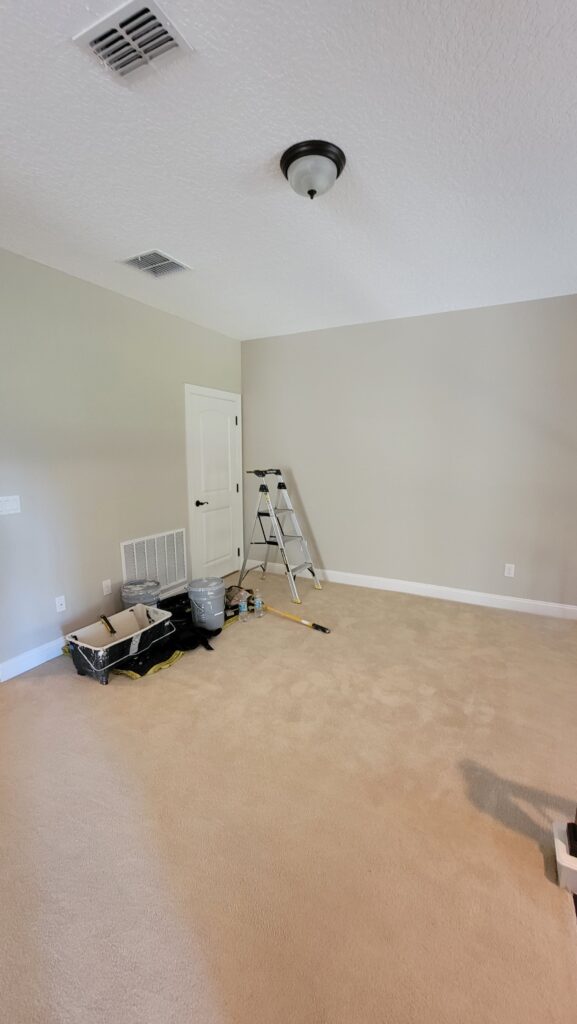House painting isn’t just about applying a coat of paint to a wall; it involves skill, creativity, and a deep understanding of different painting techniques. When it comes to special paint treatments like faux finishes, the expertise of house painters becomes even more crucial. Faux finishes are a form of decorative painting that mimics the appearance of other materials, such as marble, wood, or stone. If you need such services in St. Augustine, FL, house painters specializing in these treatments can transform your spaces into works of art. At Affordable Actions, we take pride in offering such specialized services, ensuring every job reflects our commitment to quality.

What are Faux Finishes?
Faux finishes are artistic techniques that are used to create the illusion of texture or material. For instance, faux marble finishes give walls or furniture the look of real marble, but without the hefty price tag. Similarly, faux wood finishes can make drywall or other surfaces look like wood paneling or planks. The possibilities are endless—stone, leather, suede, and even metallic effects can be achieved with faux finishes.
These treatments often require a highly skilled hand, as the results need to closely resemble the material being mimicked. That’s why house painters with experience in faux finishes are highly sought after, as they can produce visually stunning results.
Why Faux Finishes are Popular?
Homeowners are increasingly turning to faux finishes as an option to add elegance and character to their interiors. The aesthetic appeal of faux finishes is one reason for their popularity. Faux marble, for example, can create a sophisticated, high-end look in any room. Additionally, faux finishes are a cost-effective solution, as they allow homeowners to enjoy the appearance of luxurious materials at a fraction of the price.
Another reason these techniques are in demand is the flexibility they offer. Faux finishes can be applied to a wide range of surfaces, including walls, ceilings, cabinets, and furniture. The ability to change the look of an entire space without major renovations is a significant advantage.
The Process Behind Faux Finishes
Achieving the perfect faux finish requires skill, patience, and an understanding of the materials involved. Here’s how house painters typically approach these special paint treatments:
Preparation and Surface Assessment
Before beginning any faux finish, the surface must be thoroughly cleaned and prepared. This often involves sanding, priming, and patching any imperfections. Ensuring that the surface is smooth is crucial for the finish to look realistic and professional. A detailed assessment of the area is also necessary to choose the right type of finish for the space.
Selecting the Right Technique
Faux finishes come in various techniques, each designed to replicate a specific material or texture. Some of the most popular faux finishes include:
- Sponging: This involves applying a base coat of paint and then using a sponge to apply a glaze over it. The result is a textured, layered effect that can resemble stone, marble, or other materials.
- Brushed Pearl: This technique mimics the look of a pearlized finish, often used in high-end spaces to create a subtle, iridescent glow.
- Rag Rolling: Similar to sponging, rag rolling uses a rag to roll a glaze over the base coat, creating a soft texture that can look like aged plaster or silk.
- Stucco Finish: This finish imitates the rough, textured look of stucco, often used in Mediterranean or Southwestern-style homes.
Choosing the right technique is essential for achieving the desired outcome, and experienced painters know which technique works best for different surfaces and styles.
Application of Base Coat and Glaze
The base coat is applied first, and this coat must be allowed to dry thoroughly before proceeding. Once dry, the glaze or second layer is applied using the chosen technique. In many cases, multiple layers of glaze are applied to build up depth and achieve a realistic effect.
Detailing and Final Touches
Faux finishes often require fine-tuning and additional detailing to achieve a natural look. This may include adding veining to marble or creating shadows and highlights to enhance the depth of the finish. It’s this attention to detail that separates a good faux finish from a great one.
Sealing the Finish
After the faux finish has dried, a protective sealant is often applied to preserve the look and ensure durability. Depending on the area being painted, the sealant may be matte, satin, or glossy. This step helps protect the finish from wear and tear, especially in high-traffic areas.
Common Faux Finishes Used by House Painters
House painters in St. Augustine, FL, are experts in a variety of faux finishes. Here are some of the most commonly requested techniques:
- Faux Marble: Faux marble finishes can transform a simple wall or surface into something truly luxurious. By mimicking the veins and texture of real marble, painters can create a sophisticated look that’s ideal for bathrooms, foyers, or accent walls.
- Faux Wood: Faux wood finishes are an excellent way to add warmth and texture to a room without the expense of real wood paneling. This technique can be applied to walls, ceilings, and even furniture to create the illusion of a wood grain.
- Metallic Finishes: Metallic faux finishes are ideal for adding a touch of glamour to any space. These finishes mimic the look of metals like bronze, gold, or silver and can be used on walls, furniture, or even decorative items.
- Venetian Plaster: Venetian plaster creates a smooth, glossy finish that looks similar to polished stone. It’s often used in high-end settings, including luxury homes and commercial spaces, to create a timeless, classic look.
- Distressed Finishes: A distressed faux finish can make new furniture or walls look vintage or aged. This effect is especially popular in rustic or country-style homes.
How to Achieve the Best Results with Faux Finishes?
While faux finishes are a great way to add style to a home, achieving the best results requires experience and skill. House painters need to understand the nuances of each technique, including how to blend colors, apply glazes, and create texture. Moreover, selecting the right materials is essential for achieving a realistic and durable finish.
One important tip is to avoid rushing the process. Faux finishes require patience, and taking the time to carefully layer and blend the paint is crucial for achieving a flawless result. Additionally, always use high-quality materials, including paints and glazes, to ensure a long-lasting and beautiful finish.
Why Faux Finishes Are Best Left to Professionals?
While some homeowners may be tempted to try faux finishes on their own, this is one area where professional expertise makes a difference. Faux finishes require more than just a steady hand; they require knowledge of techniques, materials, and proper application methods. Without the right skills, a faux finish can end up looking artificial or poorly executed.
Professional house painters, like those at Affordable Actions, have years of experience working with these special treatments. They know exactly how to handle different surfaces, choose the right products, and apply the finishes with precision.
Why Choose Affordable Actions?
When you need top-tier faux finishes in St. Augustine, FL, Affordable Actions is the company to call. Our team of skilled painters is dedicated to providing high-quality results that meet your exact specifications. Whether you’re looking to add a touch of elegance to your living room with a faux marble finish or transform a hallway with a wood-grain look, we have the expertise and the tools to make it happen.
At Affordable Actions, we don’t just apply paint—we create art. Every project is an opportunity to bring your vision to life with precision and care. Our commitment to quality and customer satisfaction sets us apart from the competition, making us the top choice for faux finishes in St. Augustine.

